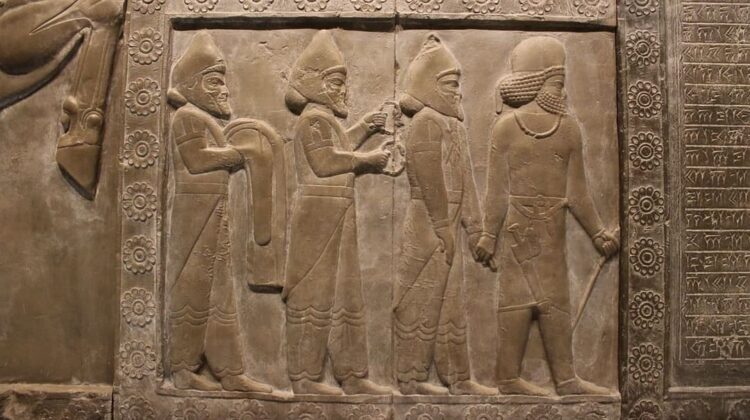
Asia’s Timeless Legacies: Unearthing Ancient Foundations
Encompassing immense diversity, Asia, the colossal and most densely populated continent, cradles some of the earliest and most transformative civilizations known to humanity. From the fertile expanses of Mesopotamia to the imperial grandeur of ancient China, Asia’s historical chronicles weave a narrative of complexity, ingenuity, and enduring influence. This exploration delves into the intricacies and cultural bequests of these venerable societies.
The Genesis of Civilization: Mesopotamia
Nestled between the Tigris and Euphrates Rivers, Mesopotamia—hailed as the “Cradle of Civilization”—flourished around 3100 BCE within present-day Iraq. This seminal region pioneered advancements in communication, societal governance, and agriculture that reverberate through history.
The Dawn of Script and Literature
The Sumerians of Mesopotamia bequeathed humanity with cuneiform, an embryonic writing system. Initially crafted for pragmatic record-keeping, this script metamorphosed into a vessel for storytelling, epitomized by the Epic of Gilgamesh, a poetic odyssey unveiling Sumerian ethos and spirituality.
Blueprints of Governance and Jurisprudence
In Mesopotamian city-states like Ur and Babylon, governance systems emerged with unprecedented structure. The Code of Hammurabi, an archaic corpus of codified laws, remains a landmark in humanity’s quest for justice and societal order.
The Enigmatic Indus Valley Civilization: A Forgotten Luminary
Emerging circa 2600 BCE and enduring until 1900 BCE, the Indus Valley Civilization, straddling contemporary Pakistan and northwest India, astounds with its urban sophistication, architectural precision, and economic foresight.
Urban Marvels and Ingenious Design
Metropolises such as Mohenjo-Daro and Harappa stand as paragons of meticulous urban planning. Their grid-patterned streets, advanced drainage systems, and uniformly crafted bricks attest to unparalleled engineering acumen.
Commerce and Connectivity
An extensive trade network intertwined the Indus Valley with distant realms, including Mesopotamia. Artifacts like seals and ornate beads unearthed in remote territories illuminate the civilization’s economic dynamism and far-reaching influence.
Ancient China: The Eternal Legacy of the Middle Kingdom
With millennia of history, China’s early dynasties, such as the Shang (1600–1046 BCE) and Zhou (1046–256 BCE), laid the cultural and intellectual foundations that would define a civilization of enduring significance.
Technological Ingenuity and Script Evolution
The Shang Dynasty’s oracle bones bear the earliest iterations of Chinese writing, a system that evolved into the intricate characters still vital in modern linguistic traditions.
Philosophical Pillars of Civilization
During the Zhou Dynasty, Confucianism and Taoism emerged as philosophical beacons, advocating harmony, ethical conduct, and the symbiosis of humanity and nature, shaping Chinese thought across epochs.
The Persian Empire: A Paradigm of Administration
Founded by Cyrus the Great, the Achaemenid Empire (550–330 BCE) sprawled from the Indus Valley to the Mediterranean, exemplifying unity amidst diversity through progressive governance.
Cultural Amalgamation and Infrastructure
Persian rulers championed cultural and religious tolerance, fostering an empire enriched by diversity. The Royal Road, an expansive trade and communication network, underscored the empire’s logistical ingenuity.
Architectural Opulence
The ceremonial magnificence of Persepolis, adorned with intricate carvings and monumental edifices, symbolized Persian imperial grandeur and architectural finesse.
The Mauryan Empire: A Radiant Epoch of Indian Civilization
Spanning from 321 to 185 BCE, the Mauryan Empire, initiated by Chandragupta Maurya, attained zenithal prominence under Ashoka the Great, whose reign epitomized governance imbued with compassion and spiritual depth.
Ashoka’s Moral Decrees
Ashoka’s inscriptions, etched onto monumental pillars and rock facades, propagated principles of non-violence, inclusivity, and societal welfare, revealing the ethical aspirations of Mauryan governance.
Cultural and Economic Flourishing
The Mauryan era witnessed flourishing artistry, architectural achievements, and a robust trade network extending to the Mediterranean and Southeast Asia.
The Khmer Empire: Guardians of Southeast Asia’s Splendor
Reigning from 802 to 1431 CE, the Khmer Empire, centered in modern Cambodia, left an indelible mark on Southeast Asia with its monumental architecture and agricultural ingenuity.
Angkor Wat: A Symbol of Transcendence
The resplendent Angkor Wat stands as a testament to Khmer mastery in design and construction, transitioning from a Hindu sanctuary to a Buddhist epicenter, mirroring the region’s spiritual evolution.
Agricultural Ingenuity
Advanced irrigation systems underpinned the Khmer Empire’s agrarian success, sustaining expansive populations and ensuring economic vitality.
Interwoven Legacies and Global Impact
Asia’s ancient civilizations flourished not in isolation but as part of a networked tapestry of cultural exchanges. Routes like the Silk Road catalyzed the diffusion of innovations—papermaking, gunpowder, and silk production—transforming societies far beyond the continent.
Timeless Inspirations
The monumental achievements of these civilizations persist, sculpting modern governance, scientific inquiry, philosophical discourse, and artistic expression. Through their legacies, we glimpse the ingenuity and enduring spirit of human endeavor.
Author: Donglu Shih
Expert in Asian culture and economics. She collaborates with major companies in the field of international relations. Collaborates with The Deeping on Asian political topics

